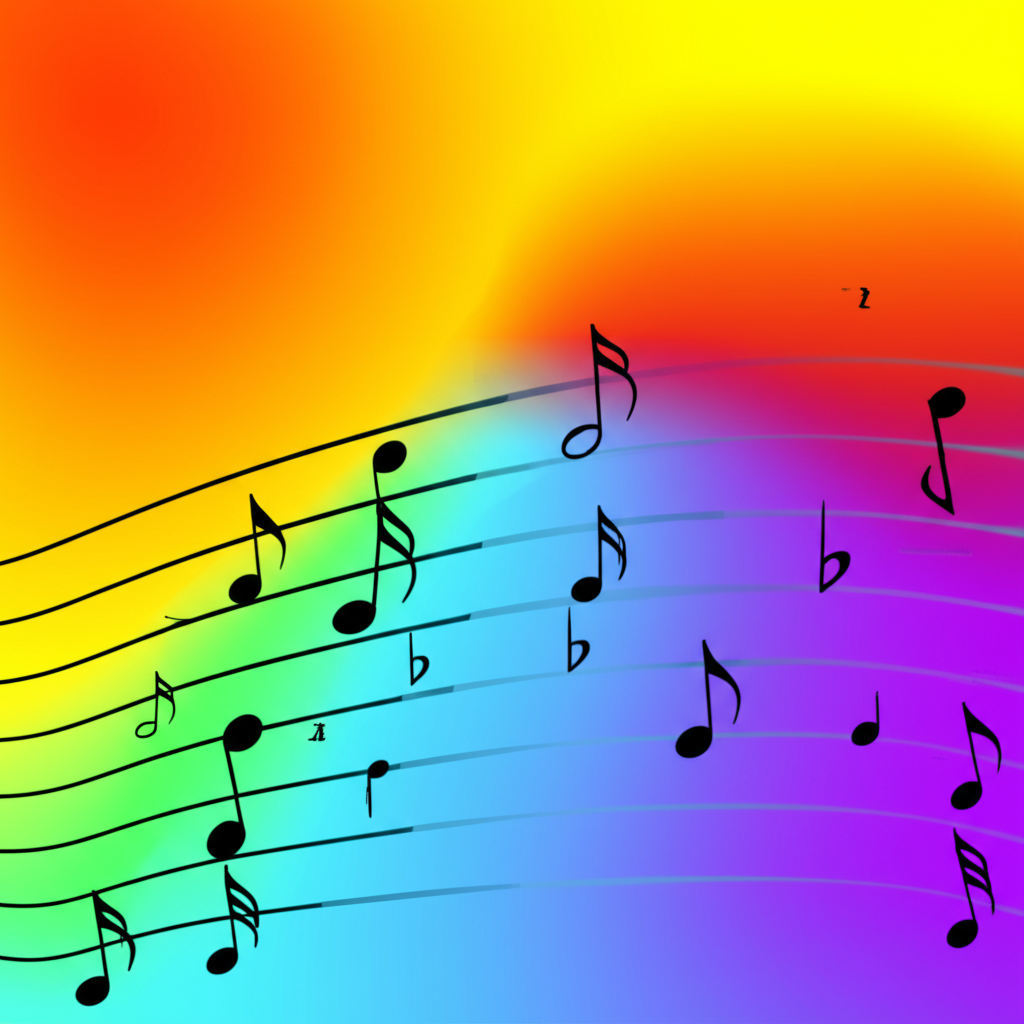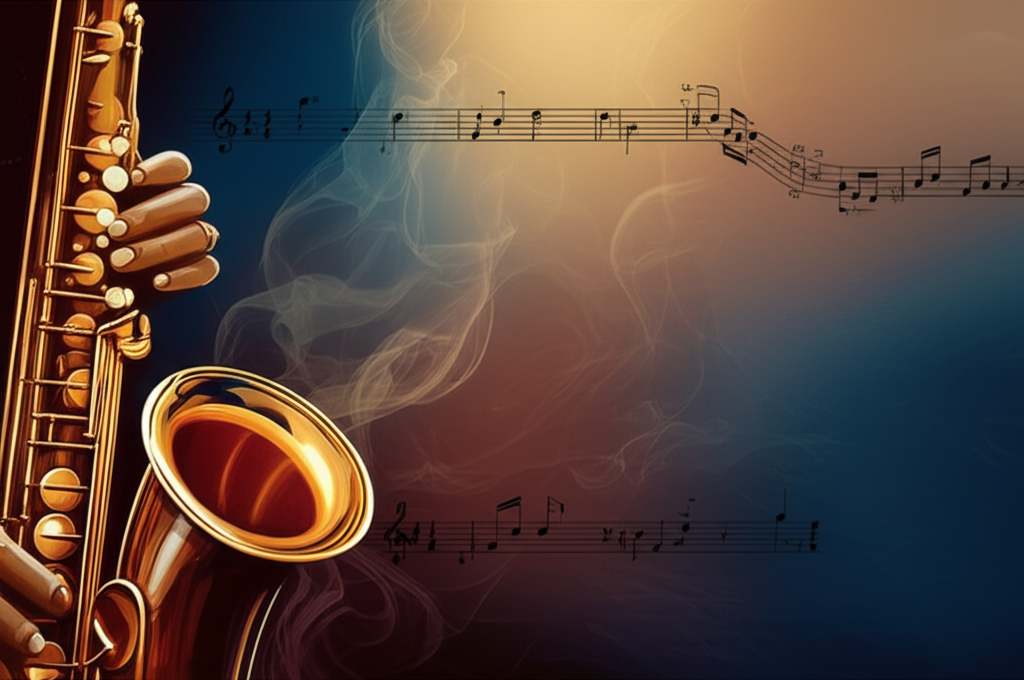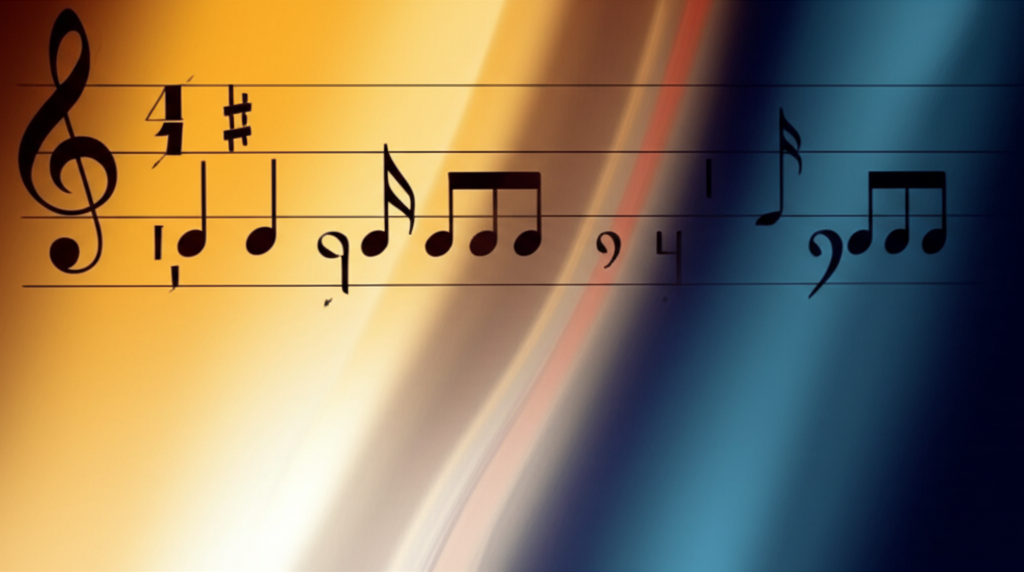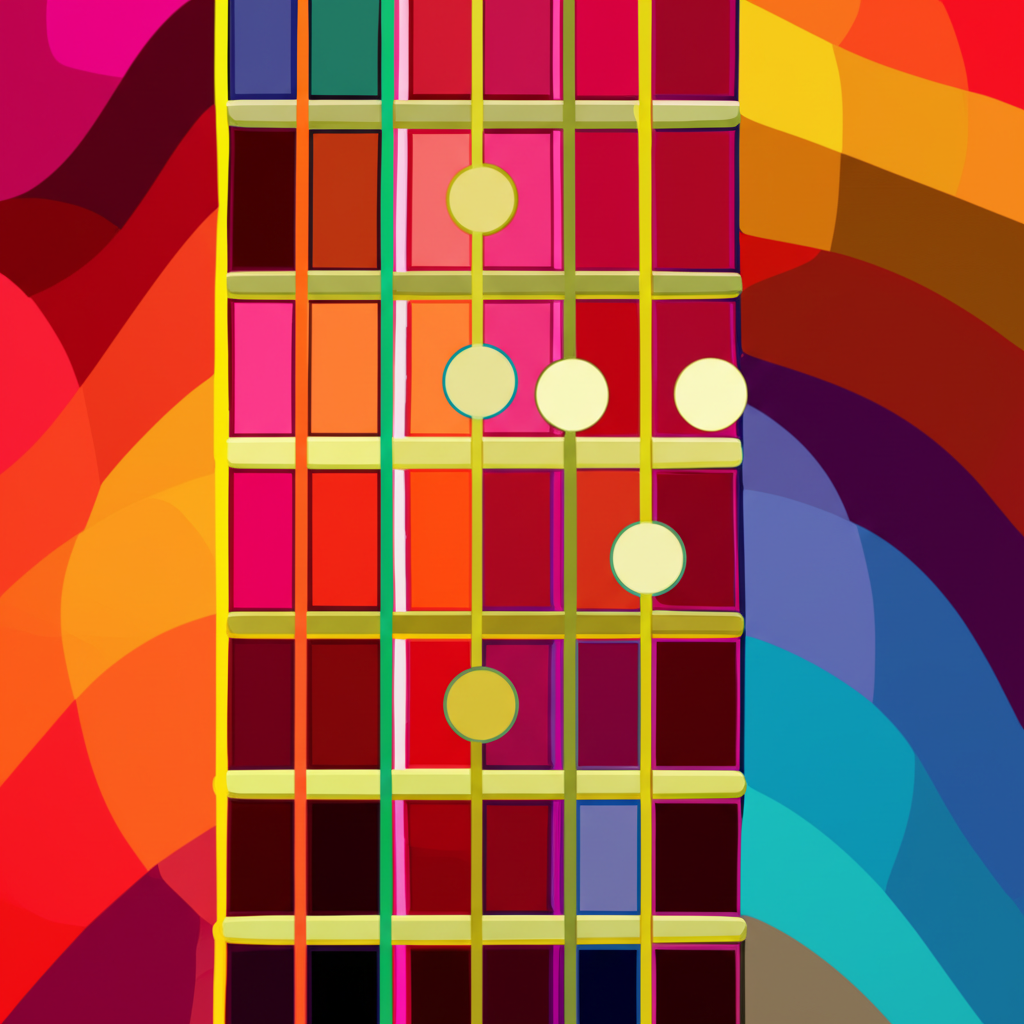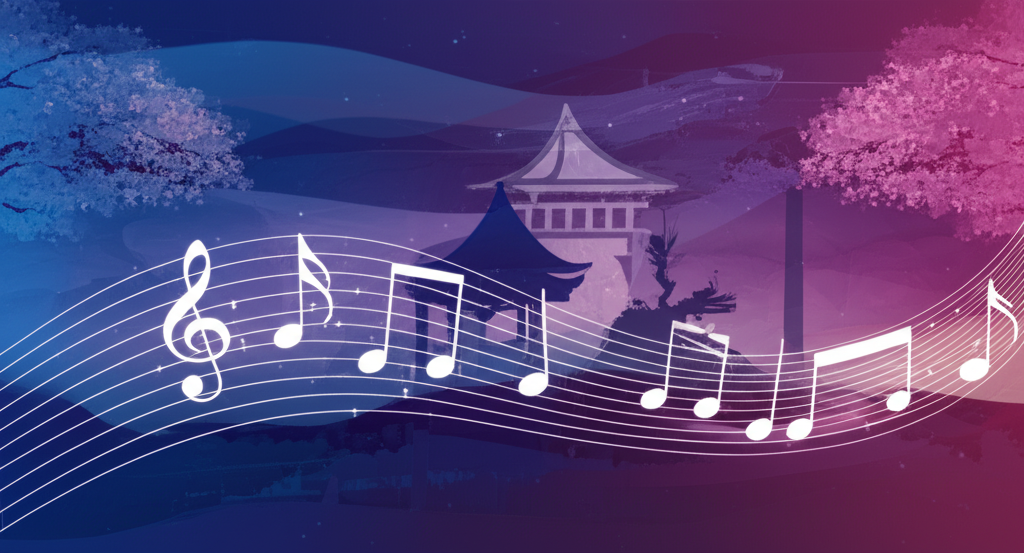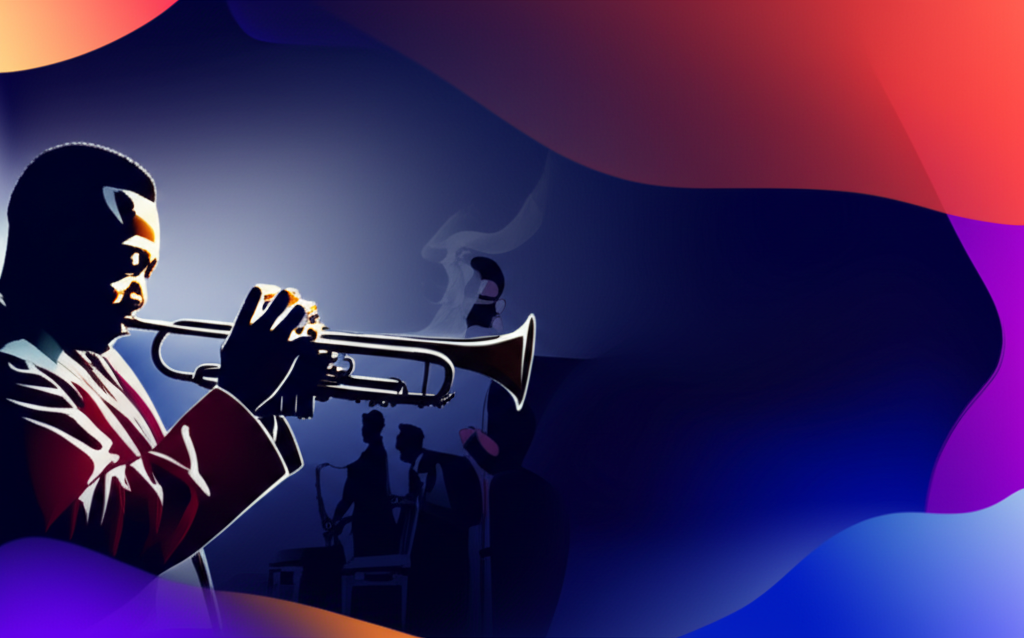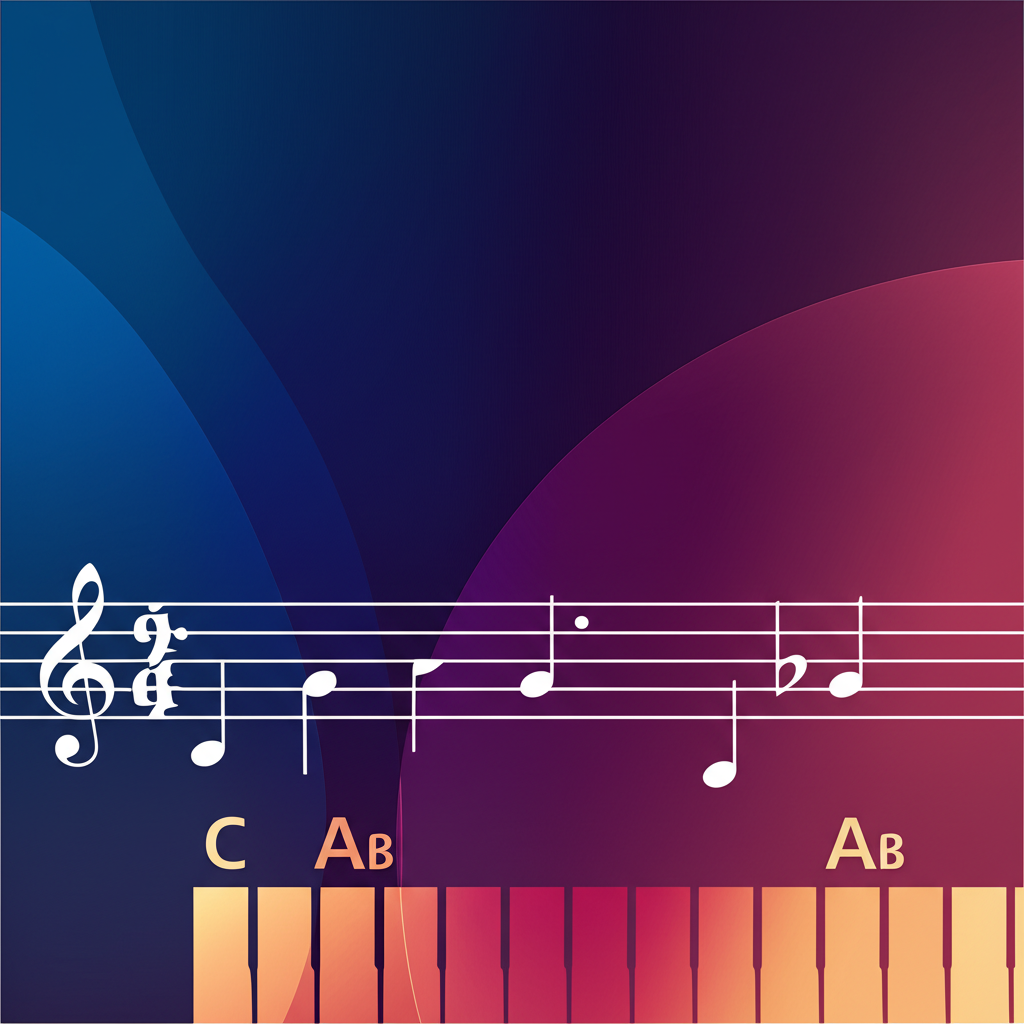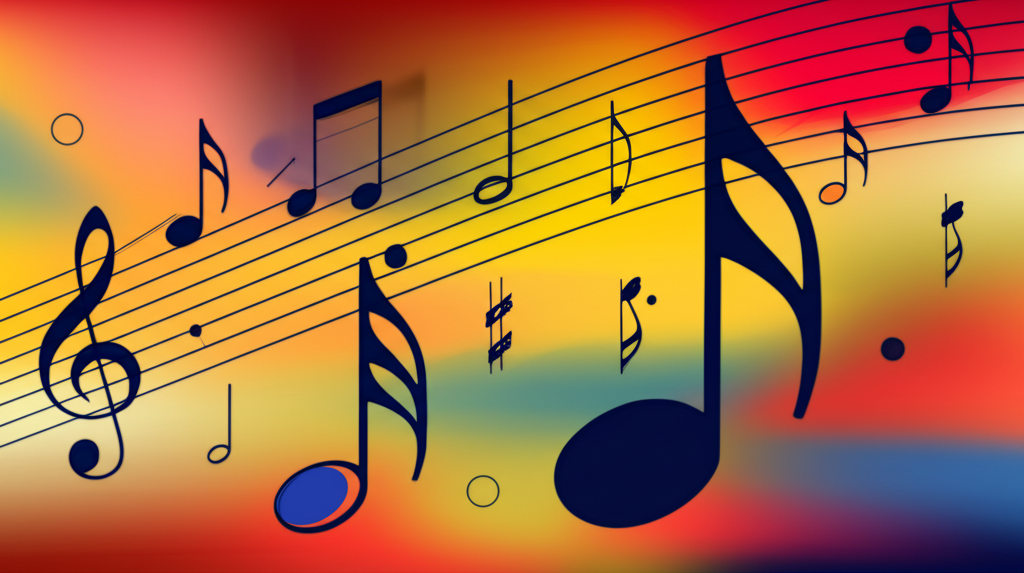
The Blues Scale: The Sound of American Soul

b4n1
May 17, 2025, 4:26 p.m.
The Blues Scale: The Sound of American Soul
Summary:
The blues scale is a fundamental musical tool that captures the expressive essence of blues and has influenced countless musical genres, from jazz to rock and beyond. This article explores the structure, sonic characteristics, and history of the blues scale, along with its practical applications in improvisation and composition. Through musical examples, fingering patterns for various instruments, and practical exercises, you'll discover how this six-note scale has shaped much of popular music over the last century.
Keywords:
blues scale, blue notes, minor pentatonic, improvisation, blues music, jazz, rock, musical tension, emotional expression, guitar techniques
Introduction:
Few musical innovations have had such a profound impact on modern music as the blues scale. Born from African-American tradition in the cotton fields of the American South in the late 19th century, this scale encapsulates centuries of musical expression, fusing African elements with European harmonic structures to create a unique and deeply emotional voice.
What makes the blues scale so special is not just its structure (although, as we will see, it is fascinating in itself), but its ability to express an extraordinary range of human emotions. From the deepest lament to the most exuberant joy, this scale has provided the vocabulary with which generations of musicians have shared their stories and feelings.
Technically, the blues scale is a modification of the minor pentatonic scale, with the addition of a chromatic note known as the "blue note." This simple addition opens up a world of expressive possibilities that have shaped entire genres, from blues and jazz to rock, soul, and practically all popular Western music of the last century.
In this article, we will explore the structure of the blues scale, its historical context, its practical applications in different genres and instruments, and provide exercises and examples to integrate it into your own musical vocabulary. Whether you are a beginner or an experienced musician, the blues scale offers an accessible entry into a world of rich and nuanced musical expression.
Structure of the Blues Scale
Composition of the Scale
The blues scale is a hexatonic scale (six notes) that is derived from the minor pentatonic scale with the addition of a chromatic note, the famous "blue note." In its most common form, this scale consists of:
- The tonic (1st)
- The minor third (♭3rd)
- The perfect fourth (4th)
- The diminished fifth/augmented fourth (♭5th/#4th) - the characteristic "blue note"
- The perfect fifth (5th)
- The minor seventh (♭7th)
For example, the blues scale in A contains the notes:
A - C - D - E♭ - E - G
Or, using the scale degrees: 1 - ♭3 - 4 - ♭5 - 5 - ♭7
Relationship with the Pentatonic Scale
The blues scale is closely related to the minor pentatonic scale. If we compare both:
Minor Pentatonic Scale in A: A - C - D - E - G
Blues Scale in A: A - C - D - E♭ - E - G
As you can see, the blues scale simply adds the blue note (E♭) to the minor pentatonic scale. This addition creates the characteristic tension and expressiveness that defines the sound of blues.
The "Blue Note" and its Significance
The most characteristic note of the blues scale is the so-called "blue note" (♭5), which creates a deliberate tension against the underlying harmony. This note represents the very essence of blues: the friction between the expected and the expressed, the tension between conformity and rebellion.
In more technical musical terms, the blue note does not "belong" strictly to the traditional Western diatonic harmony. Instead, it exists in that gray area between established tonal categories, reflecting the way the blues as a genre challenges conventional musical structures.
What is fascinating about the blue note is that it is not always played as a fixed and defined note. Especially on instruments that allow "bending" notes (like the guitar, harmonica, or human voice), the blue note is often approached as a fluid tonal area, sliding between the fourth and fifth, or approaching it from above or below. This tonal fluidity is a defining characteristic of blues.
Origin and History of the Blues Scale
The blues scale emerged from the fusion of African and European musical traditions in the context of the African-American experience in the United States.
African Roots and Cultural Fusion
Many musical traditions from West Africa used pentatonic scales and had a more flexible approach to tuning than European music. When enslaved Africans were brought to America, they brought these musical traditions with them.
Upon encountering European instruments and harmonies (especially the tempered system of the piano and functional harmony), African-American musicians created a unique synthesis that attempted to reproduce the vocal inflections and expressiveness of their original traditions within the new context.
The "blue notes" emerged as a way to capture those microtonal inflections that did not fit perfectly into the Western 12-tone system. The early blues singers "bent" the notes and used vibrato to find that expressive space between the semitones of the Western system.
From the Field to the Stage
What began in the fields and rural communities eventually found its way into the commercial realm in the early 20th century. Rural blues transformed into a codified musical form, with its own structural conventions (like the 12-bar blues) and melodic vocabulary.
W.C. Handy, known as "the Father of the Blues," was instrumental in the formalization and popularization of blues as a commercial genre in the 1910s, incorporating elements of folk blues into written compositions for orchestras and bands.
As blues spread from the rural South to the northern cities during the Great Migration, it evolved and diversified, influencing and being influenced by other emerging genres like jazz.
From Blues to Jazz, Rock, and Beyond
The blues scale and its associated harmonic characteristics would become fundamental elements of early jazz. Jazz musicians adopted the blues scale but applied it to more complex harmonic structures, creating new expressive possibilities.
Decades later, when rhythm and blues evolved into rock and roll in the 1950s, artists like Chuck Berry and Little Richard took the blues scale in new directions. In the '60s, blues-rock guitarists like Eric Clapton, Jimi Hendrix, and Jimmy Page elevated the use of the blues scale to new technical and expressive heights.
Today, the blues scale remains an essential component of the musical vocabulary in diverse genres like rock, funk, soul, country, and even in more contemporary forms like hip-hop and electronic music.
The Blues Scale on Different Instruments
Guitar
The electric guitar is perhaps the instrument most associated with the blues scale in modern music. The ability to "bend" the strings to reach those blue notes makes this instrument especially suited to express the subtleties of the blues scale.
The blues scale in A minor on the guitar can be played in the following basic position (the numbers indicate the frets):
E |---5---8-| B |---5---8-| G |---5-6-7-| D |---5-6-7-| A |---5-6-7-| E |---5---8-|
Note how this position is similar to the standard "box" of the minor pentatonic scale, but with the addition of the blue note (the 6th fret on the G, D, and A strings).
The guitar techniques commonly associated with the blues scale include:
- Bends: Bending a string to raise its pitch to reach another note of the scale (especially from ♭3 to 3, or from 4 to ♭5)
- Vibratos: Slight oscillations in the pitch of a sustained note to add expressiveness
- Slides: Sliding between notes of the scale
- Hammer-ons and Pull-offs: Legato techniques that allow smooth transitions between notes
Piano and Keyboards
On the piano, the blues scale acquires a particular character due to the percussive nature of the instrument and the impossibility of "bending" notes as on the guitar.
For A blues, the notes would be:
A - C - D - E♭ - E - G
Blues pianists developed specific techniques to compensate for the tonal rigidity of the instrument:
- Grace notes: Briefly playing an adjacent note before the main note to simulate a bend
- Trills and tremolos: Alternating rapidly between two notes to create tension
- Clusters: Playing adjacent notes simultaneously to create deliberate tension
- Rolling: Playing notes of a chord in rapid succession instead of simultaneously
Harmonica
The harmonica (especially the diatonic in cross position) has become an emblematic instrument of the blues due to its extraordinary ability to produce blue notes and expressive effects.
On an A harmonica, played in cross position (using the E scale), the typical bend would be:
- Hole 2 drawn (A - tonic)
- Overblow hole 3 drawn (C - ♭3)
- Hole 4 drawn (D - 4)
- Bend blow hole 4 (E♭ - ♭5)
- Hole 4 blow (E - 5)
- Hole 5 drawn (G - ♭7)
The "bending" technique on the harmonica allows the performer to reach notes that are not naturally available on the instrument, including blue notes and microtones.
Voice
The human voice was the first "instrument" of the blues and remains perhaps the most expressive. Blues singers use a variety of techniques to navigate the blues scale:
- Melismas: Decorating a syllable with multiple notes
- Vocal slides: Sliding between notes without clearly articulating the intermediate tones
- Growls: Adding a rough texture to certain notes to emphasize emotion
- Falsetto: Shifting to the higher register for dramatic effects
Legendary singers like Bessie Smith, Robert Johnson, Muddy Waters, and B.B. King developed unique vocal styles based on these techniques and their personal handling of the blues scale.
Applications of the Blues Scale
The Blues Scale in the 12-Bar Blues Progression
The most common harmonic structure associated with blues is the 12-bar progression, which typically follows this pattern in the key of A:
| A7 | A7 | A7 | A7 |
| D7 | D7 | A7 | A7 |
| E7 | D7 | A7 | E7 |
One of the most surprising characteristics of blues is that the blues scale in A can be played over all of this progression, even when the chords change. This creates fascinating harmonic tensions, especially when the blues scale is played over the IV (D7) and V (E7) chords.
For example, when you play an E♭ (the blue note of the A blues scale) over a D7 chord, you are playing both the ♭9 and ♯9 of the chord, creating a distinctive tension that is characteristic of the blues sound.
Example: Blues Phrase over 12-Bar Progression
Notación musical:
Blues and Jazz
In jazz, the blues scale is used in more sophisticated ways, often in conjunction with other scales and in more complex harmonic contexts:
- Alternating with bebop scales: Jazz improvisers often alternate between the blues scale and more elaborate bebop scales to create contrast
- Harmonic superimposition: Playing the blues scale of the relative major over a minor chord (for example, the C blues scale over an Am7 chord)
- Substitutions: Using the blues scale over progressions with sophisticated chord substitutions
Musicians like Charlie Parker and Thelonious Monk were masters in using the blues scale within complex harmonic contexts, creating a balance between the harmonic sophistication of bebop and the raw expressiveness of blues.
The Blues Scale in Rock
Rock adopted the blues scale and adapted it to its more aggressive aesthetic. The characteristics of using the blues scale in rock include:
- Power riffs: Repetitive patterns based on the blues scale, often with strong rhythmic emphasis
- Full-tone or more bends: While traditional blues might use quarter or half-tone bends, rock often uses more dramatic bends
- Speed techniques: Fast execution of passages based on the blues scale
- Distortion and effects: Using electronics to add new dimensions to the sound of the blues scale
Example: Rock Riff in Blues
Exercises to Master the Blues Scale
Exercise 1: Familiarization with the Scale
Start by playing the blues scale ascending and descending in different keys, paying attention to the blue note and how it creates tension against the underlying harmony.
Exercise 1: Ascending and Descending Blues Scale
Exercise 2: Sequential Patterns
Practice sequential patterns within the blues scale to develop fluency:
Exercise 2: Sequential Pattern in Blues
Exercise 3: Focus on the Blue Note
This exercise focuses on the blue note (♭5), exploring different ways to approach and leave it:
Exercise 3: Focus on the Blue Note
Exercise 4: Blues Phrases over Backing Track
Practice improvising short phrases using the blues scale over a 12-bar blues backing track. Start with simple 1-2 bar phrases and gradually build longer and more complex phrases.
Focus on:
- Effectively using space (not playing constantly)
- Developing melodic ideas through repetition and variation
- Responding to chord changes in the progression
- Exploring the expressive range of the blue note
Variations and Extensions of the Blues Scale
Major Blues Scale
While the standard blues scale we have explored is based on the minor pentatonic, there is also a "major" version of the blues scale that is derived from the major pentatonic. The major blues scale consists of:
1 - 2 - ♭3 - 3 - 5 - 6
In A, this would be: A - B - C - C♯ - E - F♯
This scale creates a "brighter" sound but still with the characteristic blues twist created by the inclusion of both the minor and major third (the "blue third").
Combinations of Minor and Major Blues
Many blues improvisers use elements of both blues scales (minor and major), creating an even richer expressive palette. This allows the musician to explore the contrast between "minor" and "major" sonorities within the same phrase.
Example: Combination of Minor and Major Blues
Blues Scale with Added Sixth
Another common variation is to add the major sixth to the standard blues scale, creating a seven-note scale:
1 - ♭3 - 4 - ♭5 - 5 - 6 - ♭7
In A, this would be: A - C - D - E♭ - E - F♯ - G
This addition provides more melodic options and allows for a smoother connection with harmonic progressions that include chords with the sixth (like A6 or A13).
Phrases and Melodic Ideas with the Blues Scale
Classic Blues Licks
Here are some classic blues "licks" or phrases that you can incorporate into your vocabulary:
Lick 1: Bend to the Blue Note
Lick 2: Chromatic Descent
Lick 3: Turnaround Phrase
Motif Development
An effective technique for improvising with the blues scale is motif development. This involves taking a short musical idea and developing it through repetition, variation, transposition, or expansion.
Example: Motif Development
Comparison of Different Blues Styles
The blues scale is applied differently depending on the specific blues style:
Delta Blues
The Mississippi Delta blues (represented by artists like Robert Johnson and Son House) is characterized by:
- Extensive use of slide techniques on the guitar
- Very expressive vocal phrasing with multiple pitch inflections
- Structures often more flexible than strict 12-bar blues
- Free and expressive use of blue notes in both voice and guitar
Chicago Blues
Chicago blues (Muddy Waters, Howlin' Wolf) developed a more urban approach:
- Addition of a full rhythm section (bass, drums)
- Use of the electric guitar with its ability to sustain notes longer
- Incorporation of amplified harmonica as a solo instrument
- Phrasing more oriented to riffs, with repetitive figures derived from the blues scale
Texas Blues
The Texas style (T-Bone Walker, Freddie King) is characterized by:
- Fluider guitar lines with jazz influence
- Greater harmonic sophistication, sometimes incorporating jazz chords
- Phrasing with more emphasis on the high notes of the scale
- Use of larger horn and instrumental sections
Conclusion:
The blues scale, with its characteristic blue note and deep emotional expressiveness, represents one of the most significant musical innovations of the 20th century. Arising from the fusion of African and European traditions in the context of the African-American experience, this scale has provided the fundamental vocabulary for entire genres and has influenced virtually all Western popular music.
What makes the blues scale so special is not only its unique structure but also its extraordinary ability to express a wide range of human emotions. From lament to joy, from anger to resignation, the blues scale provides a means to communicate what words sometimes cannot express.
Whether you apply it in its traditional context of the 12-bar blues, integrate it into more complex harmonic progressions of jazz, or use it to flavor rock, funk, or beyond compositions, the blues scale remains an indispensable tool for any musician looking to connect with the rich tradition of American popular music and its global legacy.
By mastering this scale and its applications, you not only acquire a technical tool for improvisation and composition but also connect with a deep current of musical expression that has resonated through generations and remains as relevant today as when it emerged from the cotton fields and juke joints of the American South over a century ago.
References:
-
Davis, Francis. (2003). "The History of the Blues: The Roots, the Music, the People". Da Capo Press.
-
Levine, Mark. (1995). "The Jazz Theory Book". Sher Music Co.
-
Palmer, Robert. (1982). "Deep Blues: A Musical and Cultural History of the Mississippi Delta". Penguin Books.
-
Weissman, Dick. (2005). "Blues: The Basics". Routledge.
